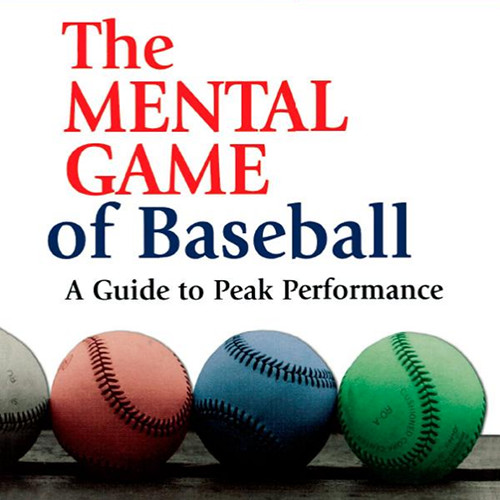Excerpt from the book The Mental Game of Baseball ![]()
![]() by H.A. Dorfman
by H.A. Dorfman ![]()
![]() and Karl Kuehl
and Karl Kuehl ![]()
![]()
Wanted: Quality Thoughts
A physical performance is the outcome of a thought. Players cannot ignore the mental activity that precedes these workings of the body. We’ll reiterate: the mental message will dictate the physical action and help determine its quality. A negative thought is not a quality thought and it doesn’t lead to quality action.
When it’s said that people are creatures of habit, the statement usually refers to physical habit. However, we all have habits of thought as well. A thought has been learned and used so often in similar situations that it becomes automatic. It often drops from conscious awareness; we don’t even realize we’re employing it. The thought becomes part of a “programmed” behavior. Negative programming hinders us both as athletes and as human beings.
Negativism isn’t a philosophy, it’s an attitude. It’s the attitude of a player whose nerves aren’t as strong as he’d like them to be. Attitudes can be changed, but first they have to be recognized. It’s quite common for a player to think to himself, “I don’t want to boot this ground ball,” or “I don’t want to walk this batter.” The word “don’t” will not get through to the body. The word carries no functional image. The phrase “boot this ground ball” does bring forth an image. The expression of a negative goal will therefore emphasize an undesirable image—and the error or the walk is more apt to be made. The body tends to do what it hears most clearly; the mind tells the body what it sees most clearly. So, thinking about what you don’t want to happen greatly increases the chance that it will happen.
Even All-Star players such as former Philadelphia Phillies third baseman Mike Schmidt and Atlanta’s Dale Murphy have fallen into the trap, as have all of us who are human, when they expressed “don’t goals” in the recent past.
“I don’t want to strike out as much this year,” (on of Murphy’s 1983 goals) redefines itself as, “I don’t want to strike out in this at-bat,” and ultimately is translated as, “I don’t want to miss this pitch.” This attitude can be corrupting—for anyone. It can lead to fear of failure, to a player’s belief that he will strike out. His belief becomes what is known as a self-fulfilling prophecy. The player, predicting failure, fails.
In 1983, while with the Los Angeles Dodgers, second baseman Steve Sax had a terrible time making the simple throw from his position to first base. The more time he had, the more likely the ball would miss its target by a wide margin. Disgruntled home fans who sat in the stands behind first base took to wearing protective helmets. Sax was frustrated, embarrassed, helpless—and certain his problem wasn’t physical. “If anyone has a solution, let me know,” he said at the time. Sax probably received more suggestions than he had bargained for, but the most common, judging from his later reaction, must have been, “Just don’t think about throwing the ball away.”
Of course, he had been thinking exactly that, but such advice was not helpful. Sax responded, “If someone said to you, ‘Don’t think about elephants in the next two minutes,’ naturally you’re going to think about elephants.”
The image implant is “elephant,” and the word “don’t” cannot block out the elephant image. Sax needed to hear what he should do (just as Schmidt and Murphy would have been better off saying what they should do [make good contact, etc.]). Sax knew what he shouldn’t do, but that wasn’t enough to solve his problem because it gave him no directive for positive action.
Gary Carter recalled the 1983 All-Star game. “I was catching some of Steve’s throws prior to the game, in infield practice. The second ball he threw to me at first base he air-mailed and hit some reporter. It wasn’t even close to me. Then, all of a sudden, I tried to signal to him to get over the top with his throws, and every ball he threw to me was perfect.
“Then he got into the game, and the ball was hit to him by Manny Trillo and, I’m telling you, I was behind the plate and I knew he was going to throw it away. I just knew it. He hadn’t kept a positive outlook. He’d said to me before, ‘Hey, I’m in the major leagues, and I can’t even make a throw from second base.’ Now, he should have said to himself, ‘Hey, I gotta be here for one reason; it’s gotta be that I have talent.’ But if he lets that other stuff play on his mind, he’s not going to be in the big leagues very long.”
On double play throws or the quick “bang-bang” plays, Sax threw well. He didn’t have time to allow his self-doubting thoughts to interfere with his body’s confidence of movement.



In baseball and in life. I have learned this. (Well, not the ‘in baseball’ bit).